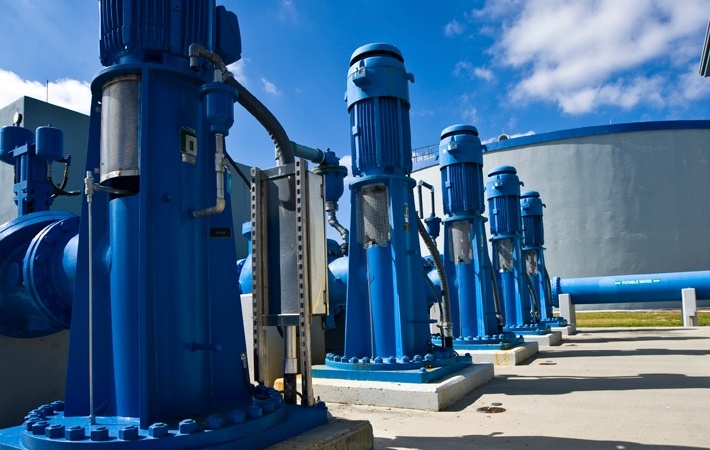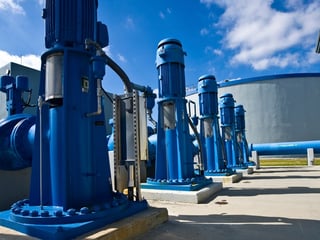
 When planning for a vertical turbine pump, there are many parameters that must be analyzed; NPSHr (Net Positive Suction Head Required) and minimum submergence are two of them. But aren’t they kind of the same thing? Not quite.
When planning for a vertical turbine pump, there are many parameters that must be analyzed; NPSHr (Net Positive Suction Head Required) and minimum submergence are two of them. But aren’t they kind of the same thing? Not quite.
First, let’s start with some definitions:
In a vertical turbine pump, NPSHr is the net positive suction head required at the first stage impeller to ensure successful pump operation, or the minimum pressure required to avoid cavitation.
NPSHr is determined by the manufacturer with hydraulic testing. It is not determined by the system design – that would be NPSHa, or the net positive suction head available. NPSHa must always be higher than NPSHr for proper pump operation.
Minimum submergence is the amount of liquid required above the pump’s suction bell to prevent a vortex from being created. Vortexes endanger the pump because they can cause air entrapment and pre-rotation. The minimum submergence is determined by the factory using a formula that is based upon the geometry and flow characteristics of the pump.
Liquid Level – The depth of the liquid level in the pit affects both factors. The level must be higher than the Minimum Submergence in order for that parameter to be satisfied. This will usually be measured in inches. For NPSHr, the liquid level will be measured as a pressure, in feet of liquid or PSI, and combined with the system pressure and frictional losses in order to add up to the NPSHa. Once the NPSHa is larger than the NPSHr (usually at least 3’ greater), then that parameter will be satisfied.
Cavitation – If the system characteristics do not meet the submergence or NPSH requirements of the pump, cavitation can occur in either case. If a vortex forms because the liquid level is too low, air can enter the pump and cause damage with the pressure changes. If there is not enough suction head available, the fluid pressure will fall below its vapor pressure inside the pump, leading to bubble formation and collapse.
Specification – Both parameters are specified by the manufacturer, as determined by calculation or hydraulic testing of the pump design. The Minimum Submergence depends on the bell diameter and flow rate and can be calculated with a formula. NPSHr will be based upon the impeller trim and flow rate and is typically determined with hydraulic testing.
In order to satisfy the Minimum Submergence requirement, just add more liquid! In order to avoid NPSHr issues, you can add liquid, add pressure to the suction source, or reduce frictional losses in the suction system, which would mainly involve the attached strainer in a submersible pump system. In either case, incorporating a level sensor and switch into your system can help maintain the required fluid level.
Not all systems that meet the requirements of Minimum Submergence and NPSHr will be trouble-free, but addressing those parameters up front sure helps! Should you run into an issue with these, get an engineer involved to help troubleshoot. There may be ways to make changes to the system to increase NPSHa and to satisfy the requirements of the pump.
Having trouble with a vertical turbine pump? Ask us about it! We gladly provide technical assistance to businesses and municipalities in Wisconsin and Upper Michigan.
These Stories on Pumps
Headquarters and Service Center
Located outside Green Bay, WI
707 Ford Street
Kimberly, WI 54136
920-733-4425
OptiFlow Design and Build Center
1002 Truman Street
Kimberly, WI 54136
920-733-4425
Burnsville Service Center
12265 Nicollet Avenue
Burnsville, MN 55337
952-444-1949
Grand Rapids Service Center
26489 Industrial Blvd
Cohasset, MN 55721
952-444-1949
© Copyright 2024. Crane Engineering. All Rights Reserved. Privacy Policy.